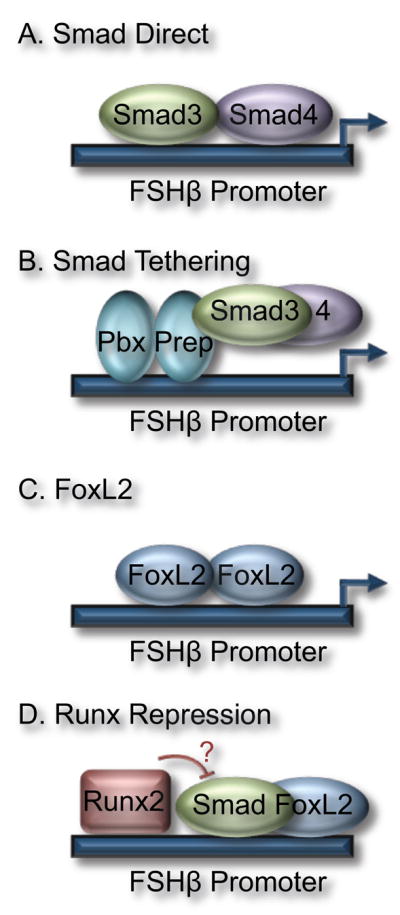Figure 3.

Different mechanisms for modulation of activin responsiveness on the FSHβ promoter. (a) Smad3 and 4 bind directly to the FSHβ promoter. Direct Smad binding has been demonstrated on rodent FSHβ promoters via a consensus SBE. (b) Smad3/4 can also interact with other transcription factors such as Pbx/Prep and be recruited to the FSHβ promoter via tethering. Although Ptx and FoxL2 can interact with Smads, it remains to be determined whether they tether Smads to the FSHβ promoter. (c) FoxL2 binds directly to the FSHβ promoter in several mammalian species, and FoxL2 binding elements are critical for activin induction. It is unknown whether FoxL2 is regulated directly by activin signaling pathways and if FoxL2 acts in a Smad-independent manner in the pituitary, as in the ovary. (d) Runx proteins diminish induction of the FSHβ gene, potentially through interactions with Smad3 or other regulators of activin induction such as FoxL2.
